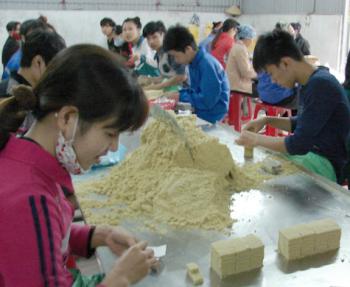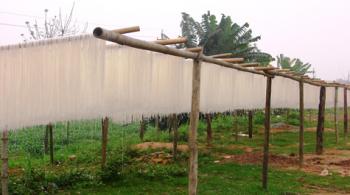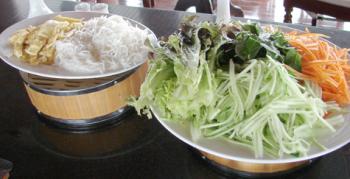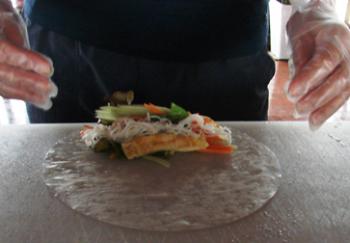What's Cooking in... Vietnam
This item appears on page 55 of the October 2017 issue.
In March 2017, my husband, John, and I enjoyed the 10-night “Halong Bay & Red River” cruise offered by Pandaw Cruises (based in Southeast Asia; phone, toll-free in the US and Canada, 844/361-6281, www.pandaw.com). We paid $2,925 per person, double occupancy, inclusive of all shore trips, local beverages and tips.
Ha Long Bay is the highlight of northern Vietnam and of the cruise, and, yes, it’s beautiful, but I really enjoyed the shore trips along the Red River and its tributaries because we visited places not frequented by most travelers.
Many of the small villages are each noted for one specific product. In the Giá Thánh area, I marveled at an 80-year-old lady threading a needle (no glasses) and sewing palm leaves on a traditional Vietnamese conical hat.
In another village, I saw rows of freshly produced rice noodles — commonly part of many Vietnamese recipes — hung out to dry.
In a village in Hai Duong province, locals were making Green Bean Cake, a specialty food of the area, and wrapping them up for sale. The sugar-cube-size cakes are made of green beans, sugar, vegetable oil, essence of grapefruit flower and essence of coconut.
Years ago, Emperor Bao Đa·i (1913-1997) visited the province and was offered the Green Bean Cake to enjoy with his green tea. He liked the flavor so much, he allowed the golden dragon, a symbol of royal power, to be used on the package. Perhaps I should have tried the Green Bean Cake with some green tea, because I found it to be too dry, with very little flavor.
In Ninh Giang I tried Bánh Gai, sticky rice cakes, made from glutinous rice flour, leaves of the gai tree (Boehmeria nivea), sugar and mung beans, all wrapped in a banana leaf. I found this much more palatable.
In one activity that was offered on board our ship, we were shown how to make Vietnamese spring rolls, and guests each tried to make their own. Assembling the ingredients was easy, but I would need a little more practice to make my spring roll look as neat and perfect as Chef Rotha’s. Chef Rotha suggested using two rice paper wrappers to prevent the ingredients from breaking through.
Spring rolls can be made with a variety of ingredients and dipped in a variety of sauces. Chef Rotha, who is Cambodian, also shared his recipe for a Khmer dipping sauce.
Sandra Scott can be reached by email at sanscott@gmail.com.
14 round rice paper wrappers
Several sprigs of fresh mint leaves (and cilantro, optional)
7 oz of chicken, cooked and cut in 4-inch-long, ½ -inch-wide strips (cooked shrimp, peeled and sliced in half, lengthwise, can also be used)
7 lettuce leaves
1 cup cooked rice vermicelli, cold
1 carrot, julienned
1 cup fresh bean sprouts
Fill a large bowl with warm water. Dip two rice paper wrappers in the water for about 1 minute, until soft. Lay the wrappers on wax paper.
On the wrappers, layer the ingredients in a line on the side closest to you, making sure to keep the ingredients an inch from the ends of the wrappers. Layer four mint leaves, 2 or 3 pieces of chicken, a lettuce leaf, a small portion of vermicelli, several pieces of carrot and several bean sprouts. Top with a few more mint leaves (or cilantro, if you like).
To roll the wrappers, take the side closest to you and pull it over the filling, then fold the two ends inward to seal, and continue rolling the spring roll to the opposite side of the wrapper.
Khmer Dipping Sauce
3 garlic cloves, minced
3 medium red chilies, seeded and minced
2 tbsp lime or lemon juice
1 tsp sugar
1 cup water
3 tbsp fish sauce
3 tsp ground peanuts
Blend garlic, chilies, juice, sugar and water. Add the fish sauce and stir. Stir in the ground peanuts. The recipe can be adjusted to taste by adding more water and/or fish sauce or chilies.





